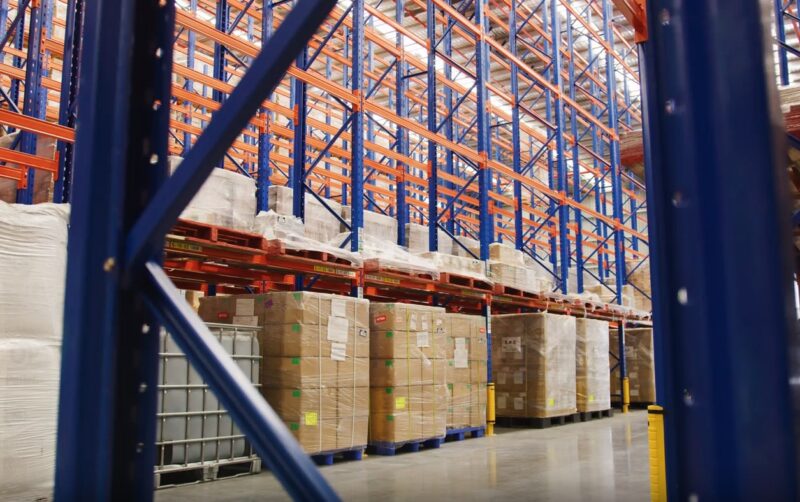In my traditional inventory practices, I, as a retailer, would pay a supplier for goods upfront before reselling them to my customers. This approach made me liable for any products I couldn’t sell. However, I’ve adopted a different supply chain model that shifts the inventory carrying costs from me to my supplier. In this model, known as consignment inventory, the manufacturer, wholesaler, or supplier retains ownership of the goods until I sell them to my customers. I only pay the supplier for the goods I sell and return any unsold items.
This supply chain model is quite common for retailers like me who may not have the cash flow to purchase large amounts of products, particularly expensive ones that take a long time to sell. It’s a strategic approach that protects me from the risk of investing in products with uncertain customer demand. I won’t lose money on items that don’t sell. Plus, it gives suppliers more control over how and where their items are sold and at what price, helping them align with their brand identity.
Key Takeaways
- Consignment Inventory Model: This model involves a retailer agreeing to sell a product, while the supplier maintains ownership until the product is sold to a customer.
- Mutual Benefits: Consignment inventory offers numerous advantages. Suppliers enjoy enhanced product visibility, and retailers face reduced financial risks.
- Effective Practices for Success: To maximize the benefits for both parties, it’s crucial to establish a robust contract and maintain transparent communication.
- Importance of Specialized Inventory Management Systems: Implementing inventory management systems tailored for consignment inventory is essential for the strategy’s effectiveness.
Explained
Buying inventory carries a risk. For instance, if a retailer buys too much merchandise, it might have to lower prices to sell these items or find another way to dispose of them, potentially resulting in a loss.
An alternative model, known as consignment inventory, minimizes this risk for the retailer.
In consignment inventory, there is an arrangement between two parties: the consignor and the consignee. The consignor, who can be a wholesaler, manufacturer, or supplier, provides products to the consignee, who is the retailer. Under this agreement, the consignor retains ownership of the products until they are sold. The retailer, or consignee, pays for the products only after they are purchased by customers.
Take, for example, a garden supplies supplier. This supplier might give a range of products like grass seed and flowers to a home improvement store for sale during the spring and fall seasons. As winter nears, the store will only pay for what it has sold and return any unsold items back to the supplier.
How It Works

In my role as a retailer, I often engage in consignment inventory agreements where I, the consignee, am approached by a supplier, the consignor. We negotiate the terms of our contract, which covers critical details like the cost of the goods, shipping fees, and procedures for handling returns. The contract might also spell out how the inventory will be managed, stipulate any requirements for deposits or commissions, and clarify who is responsible for lost or damaged products.
Once we reach an agreement on these terms, the supplier delivers the inventory to my store. I earn revenue from these items only when they are sold to customers. The profit I make depends on the retail price I set for each item. Importantly, if some of the inventory remains unsold, I have the option to return these products to the supplier without any penalty. This arrangement significantly reduces my financial risks and inventory management challenges.
How to Manage Consignment Inventory

Effectively managing consignment inventory is crucial for both suppliers and retailers, as it’s essential to maintain a close watch on the products. In organizations that handle both consigned and non-consigned goods, inventory management can become quite intricate. Some organizations still use spreadsheet-based or even paper-based systems for tracking inventory, but these methods can be slow, unreliable, and hinder collaboration between the vendor and retailer.
Various inventory management systems are out there, but not all are equipped to deal with consignment inventory. Nowadays, many organizations depend on sophisticated inventory management systems designed to enhance control over a range of inventory-related tasks.
Ideally, these systems should monitor the inventory sent by the supplier to the retailer, identify when the retailer needs more stock to prevent stockouts, and keep track of inventory the supplier must replenish.
These capabilities enable suppliers to pinpoint which products to buy, minimize the inventory they need to store at retail locations, and potentially reduce shipping costs.
Advantages

- Increased Visibility: Suppliers gain new audiences by showcasing products in retail stores, generating revenue without the need for their own retail space or staff.
- Market Testing: This model allows suppliers to test new products in different markets, evaluating performance based on sales.
- Lower Inventory Costs: Storing goods in retail spaces rather than warehouses can reduce carrying costs for suppliers.
- Reduced Financial Risk: Retailers pay for products only after they are sold, safeguarding against surplus stock and unnecessary capital loss.
- Enhanced Sales Potential: Diversified inventory through consigned goods can lead to increased sales and profits.
- Minimal Storage Requirements: Retailers bring in new stock based on demand, avoiding the need for excess storage and returning unsold products.
- Increased Expenses: Suppliers may face higher costs due to shipping, storage, and potential damage to goods.
- Reliance on Retailer’s Effort: The success hinges on the retailer’s commitment to actively sell the products.
- Variable Cash Flow: Payment for goods depends on the retailer’s sales, leading to unpredictable earnings.
- Risk of Damaged Inventory: Holding consigned goods longer increases the likelihood of damage, for which retailers often pay.
- Complex Management: Tracking consigned goods can be confusing and error-prone, requiring robust inventory management solutions.
- Potential Additional Costs: Retailers might bear certain costs until items are sold, like ensuring product security.
Best Practices for Managing Consignment Inventory

- Establish a Comprehensive Contract: The foundation of any consignment inventory agreement is a clear contract. Both the supplier and retailer must fully understand terms related to shipping, returns, payment schedules, and liability for damaged or lost products. A detailed contract should also include how inventory will be counted and managed, specify any deposits or commission requirements, and outline commitments to actively sell the merchandise.
- Build a Strong Partnership: A successful consignment inventory arrangement relies on a synergistic relationship between the supplier and retailer. Suppliers should focus on ensuring product success, while retailers must actively promote and sell the supplier’s products. The better they collaborate to get the right products to the right customers, the stronger their partnership and sales will become.
- Implement Appropriate Technology: Standard inventory software might not suffice for consignment inventory needs. It’s essential to use specialized systems that accurately track goods and invoices, offering data analytics and clear visibility of the inventory to both the supplier and retailer, thereby minimizing discrepancies.
- Explore Multiple Sales Channels: Diversifying consignment inventory partners is crucial. It reduces risk by providing both suppliers and retailers with alternative business options should certain partnerships not yield expected results.
- Maintain Open Communication: Continuous communication is vital throughout the supplier-retailer relationship. When challenges arise, both parties should seek mutually beneficial solutions, demonstrating their dedication to the agreement and their business partnership.
Consignment Inventory Accounting
In consignment inventory accounting, both the supplier and retailer record consignment sales, but the consigned goods are only included in the supplier’s inventory. The retailer does not take ownership of the goods; they are only accounted for in the retailer’s records at the point of sale. This is then reflected on the balance sheet. Subsequently, the revenue from the sale of the goods and the corresponding payment to the supplier are recorded.
FAQ
What Defines a Consignment Warehouse?
A consignment warehouse is a storage facility operated by the supplier to store goods, ensuring swift deliveries to retailers.
How Are Consignment Goods Recorded?
Consigned goods should be logged in inventory management systems designed to handle consignment inventory specifically.
What Constitutes a Consignment Item?
A consignment item refers to a product transferred from a supplier to a retailer, intended for sale to a customer.
What is a Consignment Stock Contract?
A consignment stock agreement is an arrangement where the supplier sends goods to a retailer but maintains ownership until the retailer sells these goods.
Is Consignment Included in Inventory?
Goods on consignment are counted in the supplier’s inventory, not in the retailer’s.
How Is Consignment Inventory Managed?
Managing consignment inventory involves a contract between a supplier (consignor) and a retailer (consignee), where the supplier retains ownership of the goods until the retailer sells them. The retailer has the option to return unsold goods to the supplier.
What Are the Advantages of Consignment Inventory?
Consignment inventory offers several benefits. For suppliers, it provides opportunities to reach new customers, test products in new markets, and lower inventory costs. Retailers benefit from reduced financial risk, only paying for items once sold, and the ability to expand their product range without needing extra storage space, unless demanded by market needs.
Final Words
In conclusion, consignment inventory represents a strategic and flexible approach to supply chain management, beneficial for both suppliers and retailers. This model, by shifting risks and responsibilities, allows for a more dynamic and responsive retail environment. Suppliers gain increased visibility and opportunities for market testing with reduced inventory costs, while retailers enjoy reduced financial risks, enhanced sales potential, and fewer storage needs.
